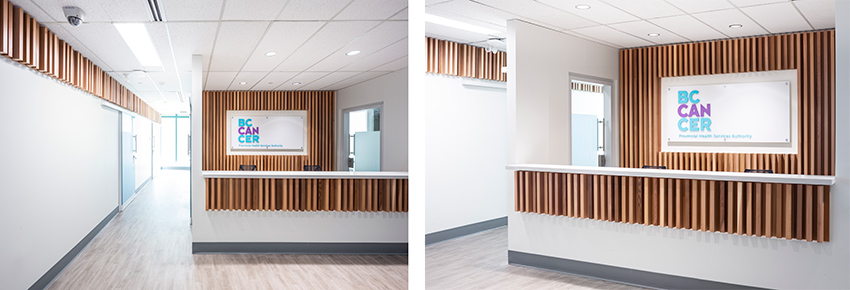Western Red Cedar and the Benefits of Biophilic Design
Biophilic Design
Incorporating nature into the building can increase the sense of connectedness to the natural environment. This can be achieved with vegetation walls (internal/external), designs mimicking natural forms and patterns, and water features.
15 PATTERNS OF BIOPHILIC DESIGN13
Terrapin Bright Green, an environmental consulting and strategic planning firm, is the leading authority on biophilic design and notes that experiences of nature in the built environment tend to fall into three broad categories, which can be further broken down into 15 patterns of biophilic design. The three categories are Nature in the Space, Natural Analogues, and Nature of the Space. This is just a brief overview of the 15 patterns of biophilic design, which Terrapin leaves to the designer to interpret, but we will discuss specific patterns as they relate to wood a bit later in the course.
Nature in the Space
Nature in the Space refers to having direct, physical experiences with nature in the built environment. These can include views of landscapes, plant life, water, and animals, as well as breezes, sounds, scents, and other natural elements. Terrapin says, “The strongest Nature in the Space experiences are achieved through the creation of meaningful, direct connections with these natural elements, particularly through diversity, movement, and multi-sensory interactions.”
Nature in the Space encompasses seven biophilic design patterns:
- Visual Connection with Nature
- Non-Visual Connection with Nature
- Non-Rhythmic Sensory Stimuli
- Thermal & Airflow Variability
- Presence of Water
- Dynamic & Diffuse Light
- Connection with Natural Systems
Natural Analogues
Natural Analogues refers to indirect experiences of nature in the built environment. These include collinear (points in a straight line) and biomorphic forms, natural materials, and a level of complexity and order through materials or patterns, such as fractals. Terrapin says, “Objects, materials, colors, shapes, sequences, and patterns found in nature can manifest as artwork, ornamentation, furniture, décor, and textiles in the built environment. For example, mimicry of shells and leaves, furniture with organic shapes, and natural materials that have been processed or extensively altered (e.g., wood planks, granite tabletops), each provide an indirect connection with nature. While they are real, they are only analogous to the items in their ‘natural’ state.”
Natural Analogues encompasses three patterns of biophilic design:
- Biomorphic Forms & Patterns
- Material Connection with Nature
- Complexity & Order
Nature of the Space
Nature of the Space addresses spatial configurations in nature. This includes our innate and learned desire to be able to see beyond our immediate surroundings (distant views through a space); our fascination with the slightly dangerous or unknown; obscured views and revelatory moments; and sometimes even phobia inducing properties when they include a trusted element of safety. It should be noted that Pattern 15—Awe, was added in 2020 and is not included in Terrapin’s 14 Patterns of Biophilic Design, published in 2014.
Nature of the Space encompasses four biophilic design patterns:
- Prospect
- Refuge
- Mystery
- Risk/Peril
- Awe
Of the 15 patterns of biophilic design, wood falls most clearly into Biomorphic Forms and Patterns—Pattern #8 and Material Connection with Nature—Pattern #9.










